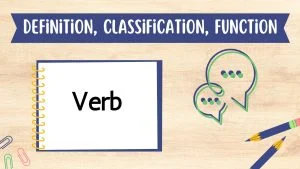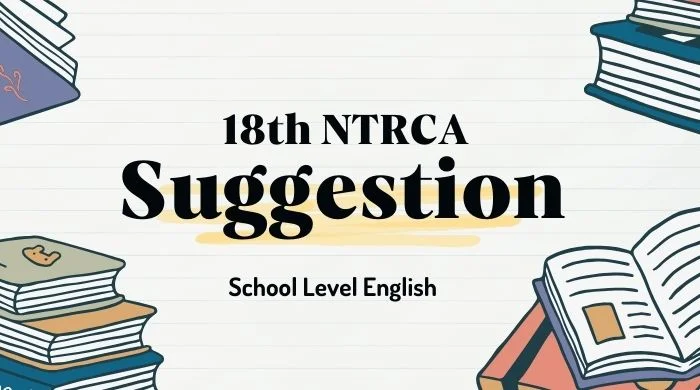Verbs are the workhorses of the English language. They bring life and action to sentences, allowing us to convey ideas, emotions, and events effectively. In this comprehensive guide, we will delve into the world of verb examples, exploring their definition, classification, function, formation, and Transitive and Intransitive Verbs. By the end of this article, you’ll have a solid understanding of this crucial part of grammar and communication.
Defining Verbs
A verb is a word that expresses an action, occurrence, or state of being. It’s a fundamental component of a sentence, and without it, a sentence cannot stand on its own. Verbs are often referred to as the “action” words in a sentence, but they can also indicate a state of being or existence. Let’s break down these aspects of verbs further:
1. Action Verbs
Action verbs, as the name suggests, convey an action that someone or something is performing. Examples include “run,” “eat,” “write,” and “dance.” These verbs create vivid images and give sentences a dynamic quality. Consider the following examples:
- She ran a marathon.
- They ate dinner at the restaurant.
- He writes a blog every day.
- She dances gracefully on stage.
2. Linking Verbs
Linking verbs connect the subject of a sentence to a subject complement, which can be either a noun, pronoun, or adjective. They indicate a state of being or a condition rather than an action. Common linking verbs include “be,” “become,” “seem,” and “appear.” Here are some examples:
- She is a talented musician. (The verb “is” links the subject “She” to the compliment “a talented musician.”)
- The cake smells delicious. (The verb “smells” links the subject “The cake” to the complement “delicious.”)
- He became a successful entrepreneur. (The verb “became” links the subject “He” to the compliment “a successful entrepreneur.”)
Now that we’ve clarified what verbs are and the different types, let’s move on to classifying verbs based on their functions.
Verb Classification
Verbs can be classified in various ways, depending on their functions within a sentence. Here are some common classifications:
1. Transitive Verbs
Transitive verbs are verbs that require a direct object to complete their meaning. The direct object receives the action of the verb. For example:
- She bought a new car. (The verb “bought” requires a direct object, which is “a new car.”)
2. Intransitive Verbs
Intransitive verbs, on the other hand, do not require a direct object to complete their meaning. They stand alone and express an action or state. For example:
- He slept peacefully. (The verb “slept” does not need a direct object.)
3. Auxiliary Verbs (Helping Verbs)
Auxiliary verbs, also known as helping verbs, assist the main verb in a sentence. They are used to form verb tenses, aspects, and moods. Common auxiliary verbs include “be,” “have,” and “do.” Here are some examples:
- She is singing. (The auxiliary verb “is” helps form the present continuous tense.)
- They have eaten lunch. (The auxiliary verb “have” is used to create the present perfect tense.)
4. Modal Verbs
Modal verbs express possibility, necessity, ability, permission, or obligation. Common modal verbs include “can,” “could,” “may,” “might,” “shall,” “should,” “will,” “would,” “must,” and “ought to.” Here are a few examples:
- You can come to the party if you’d like. (Expressing possibility)
- We must finish the project by Friday. (Expressing necessity)
- He should apologize for his behavior. (Expressing obligation)
Now that we’ve covered verb classification, let’s explore the functions of verbs in sentences.

Verb Functions in Sentences
Verbs serve various functions within sentences, including:
1. Predicate
In a sentence, the verb often acts as the predicate, which is the part that conveys the action or state of being. For example:
- She painted a beautiful mural.
- He is a talented musician.
2. Subject
In some cases, the verb can also function as the subject of a sentence. This is common in questions and commands. For example:
- Is she coming to the party? (Here, the verb “Is” serves as the subject of the question.)
- Run as fast as you can! (Here, the verb “Run” functions as the command or imperative sentence.)
3. Verb Phrase
A verb phrase consists of a main verb and any auxiliary verbs that accompany it. Together, they convey the verb’s tense, aspect, and mood. For example:
- She has been studying all night. (The verb phrase “has been studying” indicates the present perfect continuous tense.)
4. Modifier
In some cases, verbs can also function as modifiers, adding details or clarifying information within a sentence. For example:
- The book left her in tears. (Here, the verb “left” modifies the noun “book” to explain its effect on her.)
Now that we have explored the functions of verbs within sentences, let’s delve into the formation of verbs.
Verb Formation
The formation of verbs involves various aspects, including tense, voice, and mood. Let’s explore each of these in detail:
1. Verb Tense
Verb tense indicates when an action took place or the timeframe of a state. English verbs can be categorized into several tenses, including:
- Present Tense: Indicates actions happening now or regularly. Example: She works hard.
- Past Tense: Indicates actions that have already occurred. Example: They visited the museum.
- Future Tense: Indicates actions that will happen in the future. Example: He will travel tomorrow.
2. Verb Voice
Verb voice indicates whether the subject is performing the action (active voice) or receiving the action (passive voice). Examples:
- Active Voice: She wrote the novel.
- Passive Voice: The novel was written by her.
3. Verb Mood
Verb mood expresses the speaker’s attitude or the likelihood of an action occurring. Common moods include:
- Indicative Mood: Used to state facts or ask questions. Example: She is here.
- Imperative Mood: Used for commands or requests. Example: Please pass the salt.
- Subjunctive Mood: Used for hypothetical situations or wishes. Example: If I were you, I would go.
Now that we’ve covered the formation of verbs, let’s move on to their practical use in sentences.
Using Verbs Effectively
Using verbs effectively is essential for clear and engaging communication. Here are some tips for using verbs in your writing and speech:
1. Choose Strong Verbs
Strong verbs convey a clear and vivid image of the action or state. Instead of relying on weak verbs with generic meanings, opt for specific and descriptive verbs. For example:
- Weak Verb: She walked into the room.
- Strong Verb: She sauntered into the room.
2. Match Verb Tense
Maintain consistency in verb tense within a sentence or paragraph. Shifting tenses without a clear reason can confuse readers. For example:
- Inconsistent: She runs a marathon, and then she will eat dinner.
- Consistent: She runs a marathon, and then she eats dinner.
3. Use Active Voice
In most cases, prefer using active voice over passive voice. Active voice is more direct and concise. For example:
- Passive Voice: The report was written by him.
- Active Voice: He wrote the report.
4. Pay Attention to Verb Agreement
Ensure that your verbs agree in number (singular or plural) with their subjects. For example:
- Incorrect: The team was divided in their opinions. (Subject “team” is singular, but the verb should be “were.”)
- Correct: The team were divided in their opinions.
5. Consider Verb Consistency
When telling a story or recounting events, maintain consistency in verb choice to create a smooth narrative flow. For example:
- Inconsistent: She jumped onto the train. The train started moving.
- Consistent: She jumped onto the train. The train began to move.
Verb Consistency
Verb consistency refers to the practice of using verbs in a uniform and coherent manner throughout a piece of writing or spoken communication. It involves maintaining agreement in terms of verb tense, voice, mood, and form within sentences and paragraphs. Consistency in verb usage is crucial for ensuring clarity, coherence, and grammatical correctness in your communication.
Here are some key aspects of verb consistency:
- Verb Tense Consistency: This involves using the same tense (e.g., present, past, future) for verbs when describing actions or events that occur at the same time within a sentence or paragraph. Inconsistent use of verb tenses can confuse readers or listeners. For example, in a narrative, it’s important to stick to one past tense (e.g., “He ran”) rather than switching between past and present (e.g., “He runs”).
- Verb Voice Consistency: Verb voice refers to whether the subject performs the action (active voice) or receives the action (passive voice). Maintaining a consistent verb voice within a text helps readers follow the narrative or argument smoothly. Mixing active and passive voice can disrupt the flow of your writing.
- Verb Mood Consistency: Verb mood indicates the speaker’s attitude or the likelihood of an action occurring. Common moods include indicative (stating facts), imperative (giving commands), and subjunctive (expressing hypothetical situations). Consistency in verb mood ensures that your tone and message remain coherent.
- Verb Form Consistency: This pertains to using consistent forms of verbs, such as regular or irregular verbs, throughout your text. Inconsistent verb forms can be distracting and may affect the readability of your writing.
- Consistency in Verb Agreement: Subject-verb agreement is a critical aspect of verb consistency. Verbs must agree in number (singular or plural) with their subjects. Failing to maintain this agreement can lead to grammatical errors.
Conclusion
Verbs are the backbone of effective communication. They define actions, states of being, and connections within sentences. Understanding the classification, function, formation, and use of verbs is essential for mastering the art of writing and speaking in English. By applying these principles, you can enhance your language skills and convey your ideas with clarity and precision. So, go ahead, embrace the power of verbs, and let your words come to life!
 Sopner BCS Sopner BCS: We fuel your BCS dreams
Sopner BCS Sopner BCS: We fuel your BCS dreams





One comment
Pingback: 4 Super Tricks of Choosing the Right Preposition Before Date - Sopner BCS